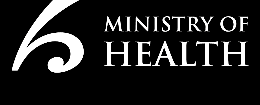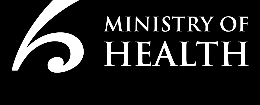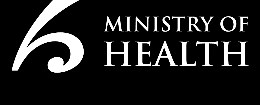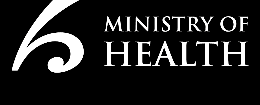
Document One
Memorandum
PPE Update
Date due to MO: 12 May 2020
Action required by:
N/A
Security level:
IN CONFIDENCE
Health Report number: HR20200735
To:
Hon Dr David Clark, Minister of Health
.
Contact for telephone discussion
Name
Position
Telephone
Shayne Hunter
Deputy Director-General Data and Digital section 9(2)(a)
and COVID-19 Health Supply Chain Lead
Action for Private Secretaries
N/A
Date dispatched to MO:
under the Official Information Act
Released






Document One
PPE UPDATE
Purpose of report
1.
This report responds to your request for further information on the Ministry of Health/
Governments role supporting non-health and disability providers with Personal
Protective Equipment (PPE).
Background
2.
Your office requested information on:
entities/sectors the Government has been importing/procuring PPE for, outside
public health and disability providers;
the terms and arrangements the Government has been doing this under;
the extent to which non-government entities/sectors can import/procure their own
PPE – and whether this is likely to change over the coming weeks and months;
the role the Government has in importing/procuring PPE on behalf of
entities/sectors outside public health and disability providers; and
if the Ministry intends to proceed with cost recovery in relation to PPE, then how
will this decision be communicated.
3.
The Ministry of Health (MoH) manages the national health expenditure on PPE, with
expenditure split across three streams:
• National Pandemic Reserve;
• Health sector;
• Non-Health sectors.
4.
The National Pandemic Reserve is maintained at a level that provides three months’
supply of stock - enough coverage to support emergency critical health needs in
extraordinary circumstances.
under the Official Information Act
5.
To eliminate procurement competition for PPE between DHBs and shared service
agencies throughout Alert Level 4 and Alert Level 3 (AL4 and AL3), the MoH established
a group to oversee procurement of major PPE. The group includes regional
procurement leads from individual DHBs, Health Partnerships and PHARMAC (national)
and HealthSource (Northern Region).
6.
The group al ows for national and centralised coordination and distributed workload
for sourcing and procuring significantly higher volumes of PPE than previous
arrangements. Establishing this group builds trust and ensures transparency within the
Released
sourcing and supply requirements of PPE. If demand for PPE drops and stabilises, we
mutual y agree to use existing forward orders of PPE to replenish the national
pandemic reserve.
7.
Provision of PPE to the health sector is currently managed at the front-end by the MoH,
via an online ordering system, OneLink. DHBs assess their needs and load their orders,
and orders for their publicly funded regional healthcare providers, into OneLink. The
MoH reviews al orders to build a comprehensive view of national demand, urgency
Health Report: HR20200735
2

Document One
and stock-on-hand. Once approved and distributed to DHBs, DHBs then distribute the
PPE to their regional healthcare providers.
8.
Provision of PPE to the non-health sectors is done via the NXP procurement online
ordering channel.
9.
Under AL3 and AL4, management controls for priority distribution of PPE include the
following decision-making criteria:
• type of service that requires the PPE (criticality of the service)
• level of inventory: stock on hand, on order, and consumption rates (risk early
identification of supply shortage)
• urgency of need across the country (balancing competing demand);
10.
Opportunities exist to reduce costs and increase security of PPE supply including, but
not limited, to the exploration of domestic production opportunities and public/health
workforce education campaigns designed to temper/control demand and cost.
PPE Procurement and Distribution outside of Public Health and Disability
Providers
11.
The MoH has not imported or procured any PPE specifical y for entities or sectors
outside of public health and disability providers.
12.
Limited supply of PPE has been provided to areas outside of Public Health and
disability providers, where a level of contact/exposure to COVID-19 has been
anticipated in the course of services provided e.g Ministry of Social Development and
Fire and Emergency New Zealand. Financial ability to recover costs over time has not
been a factor in the decision making of PPE supply under AL4 or AL3.
13.
MoH has also provided PPE to a limited number of private businesses, through the
non-health distribution channel, which are considered essential services providing
emergency work under AL4 and 3, for example plumbers. There is no cost recovery for
PPE distributed through this channel, however, the organisations that request PPE
agree that these costs may be recovered by the MoH in future. Non-government
entities/sectors can import/procure their own PPE; however, they do require advice and
under the Official Information Act
guidance on use, which is made available via the MoH communication channels.
14.
Commercial organisations such as NXP hold a range of PPE stock that they will make
available to the market for purchase under Alert Level 2 (AL2). This wil not require any
involvement from the Ministry of Health.
15.
Information about where to source PPE wil be made available on the MoH and COVID-
19 website as part of the update of moving to AL2.
Released
16.
Under AL2 the MoH wil work with the Ministries of Social Development, Foreign Affairs
and Trade, and Business Innovation and Employment to support private business PPE
needs through advice and guidance.
Health Report: HR20200735
3

Document One
Domestic Production Opportunities
17.
Concerns around constraints in the international supply market remain. These concerns
include, but are not limited to, the quality of raw materials and finished products, the
reliability of the international supply chain and inflation in cost of international y
sourced masks. This presents an opportunity for a New Zealand-based manufacturer
(or manufacturers) that can:
• ideally source all raw materials from within New Zealand;
• produce P2/N95 masks, made to AS/NZS1716 grade standards, and other PPE
products; and
• have al products fully certified, if required, by the relevant authorities as determined
by the Ministry of Health.
18.
This will:
• reduce our reliance on the international supply chain al owing a seamless ramp up in
production, as required;
• begin immediate production, with the ability to scale up to produce significant
volumes of P2/N95 protective masks and other products;
• secure a competitive price in the current market;
• contribute to restoring New Zealand PPE reserves;
• create increased employment opportunities, and;
• build manufacturing capability within New Zealand.
19.
Health officials are in discussions with the Ministry of Business Innovation and
Employment (MBIE) to boost the New Zealand production capacity, including the use
of locally sourced materials to mitigate one of the current capacity constraints.
under the Official Information Act
Dr Ashley Bloomfield
Director-General of Health
Released
Health Report: HR20200735
4
Document Outline








